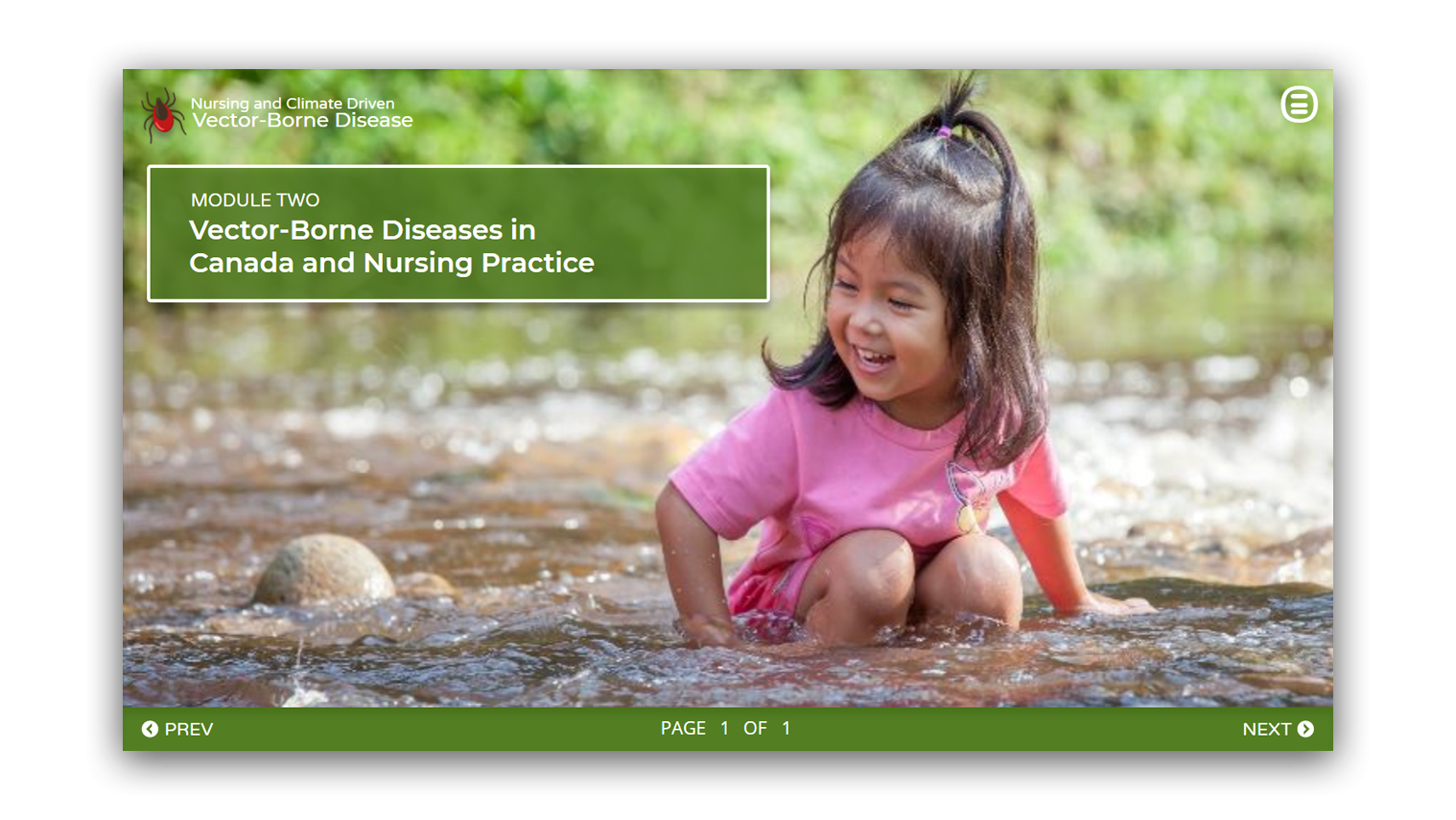
In this module, two case studies examine the relationship between VBDs in Canada and climate change from a nursing practice perspective.
The first case study follows the story of Stella Edwards, a public health nurse and Rhett Atawich, a 6-year old boy, who has been feeling unwell and presents to his local public health unit for school immunizations.
The second case study involves Adele Simpson, an Emergency Room nurse and Steve Porter, who presents to the Emergency room with a high fever, headache, body aches, a mild rash, and swollen glands.
Module 2 offers an overview of Vector-Borne Diseases (VBDs) in Canada with a focus on the two main VBDs that are a current threat to Canadians – Lyme disease and West Nile Virus (WNV). Epidemiological principles, prevalence, symptoms, and transmission of these VBDs are highlighted in this module.
Learning outcomes for this module:
By the end of this module, the learner will be able to:
- Demonstrate an understanding of the epidemiology and changing landscape of vector-borne diseases (VBDs) in Canada resulting from climate change (1.1)
- Identify intersectoral measures at local, regional, and national levels to mitigate the risk of acquiring VBDs and the adverse effects of VBDs on health (1.9)
- Demonstrate the ability to access appropriate evidence on the profile of each VBDs in Canada including clinical features, causative agents, diagnoses, occurrence, reservoirs, incubation period, transmission, risk groups and prevention) (1.5)

In this module, two case studies examine the relationship between VBDs in Canada and climate change from a nursing practice perspective.
The first case study follows the story of Stella Edwards, a public health nurse and Rhett Atawich, a 6-year old boy, who has been feeling unwell and presents to his local public health unit for school immunizations.
The second case study involves Adele Simpson, an Emergency Room nurse and Steve Porter, who presents to the Emergency room with a high fever, headache, body aches, a mild rash, and swollen glands.
Module 2 offers an overview of Vector-Borne Diseases (VBDs) in Canada with a focus on the two main VBDs that are a current threat to Canadians – Lyme disease and West Nile Virus (WNV). Epidemiological principles, prevalence, symptoms, and transmission of these VBDs are highlighted in this module.
Learning outcomes for this module:
By the end of this module, the learner will be able to:
- Demonstrate an understanding of the epidemiology and changing landscape of vector-borne diseases (VBDs) in Canada resulting from climate change (1.1)
- Identify intersectoral measures at local, regional, and national levels to mitigate the risk of acquiring VBDs and the adverse effects of VBDs on health (1.9)
- Demonstrate the ability to access appropriate evidence on the profile of each VBDs in Canada including clinical features, causative agents, diagnoses, occurrence, reservoirs, incubation period, transmission, risk groups and prevention) (1.5)

